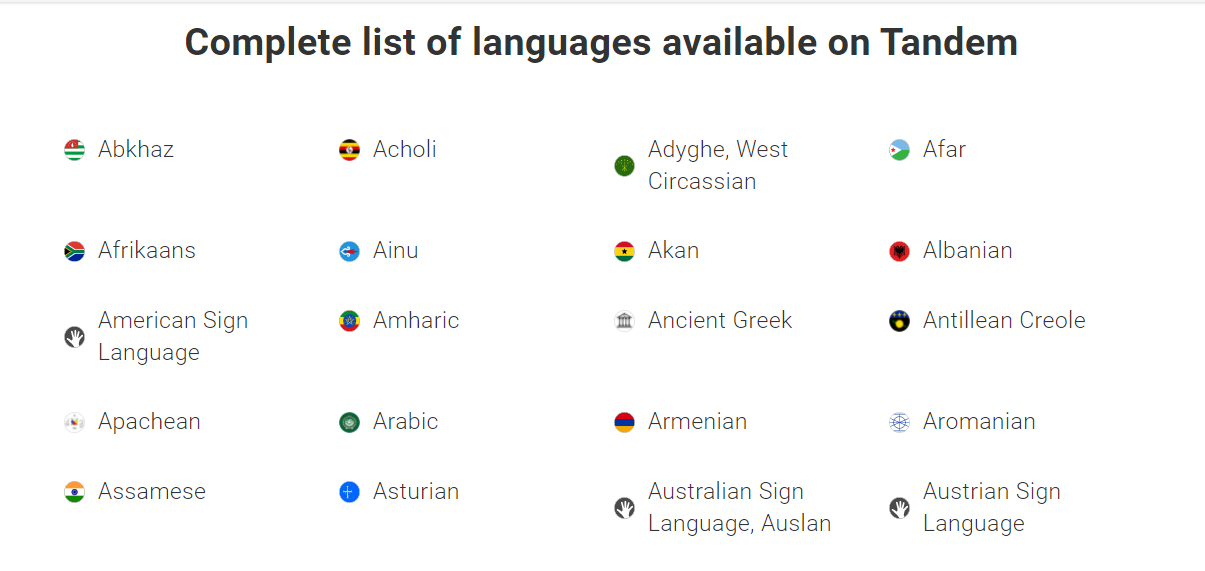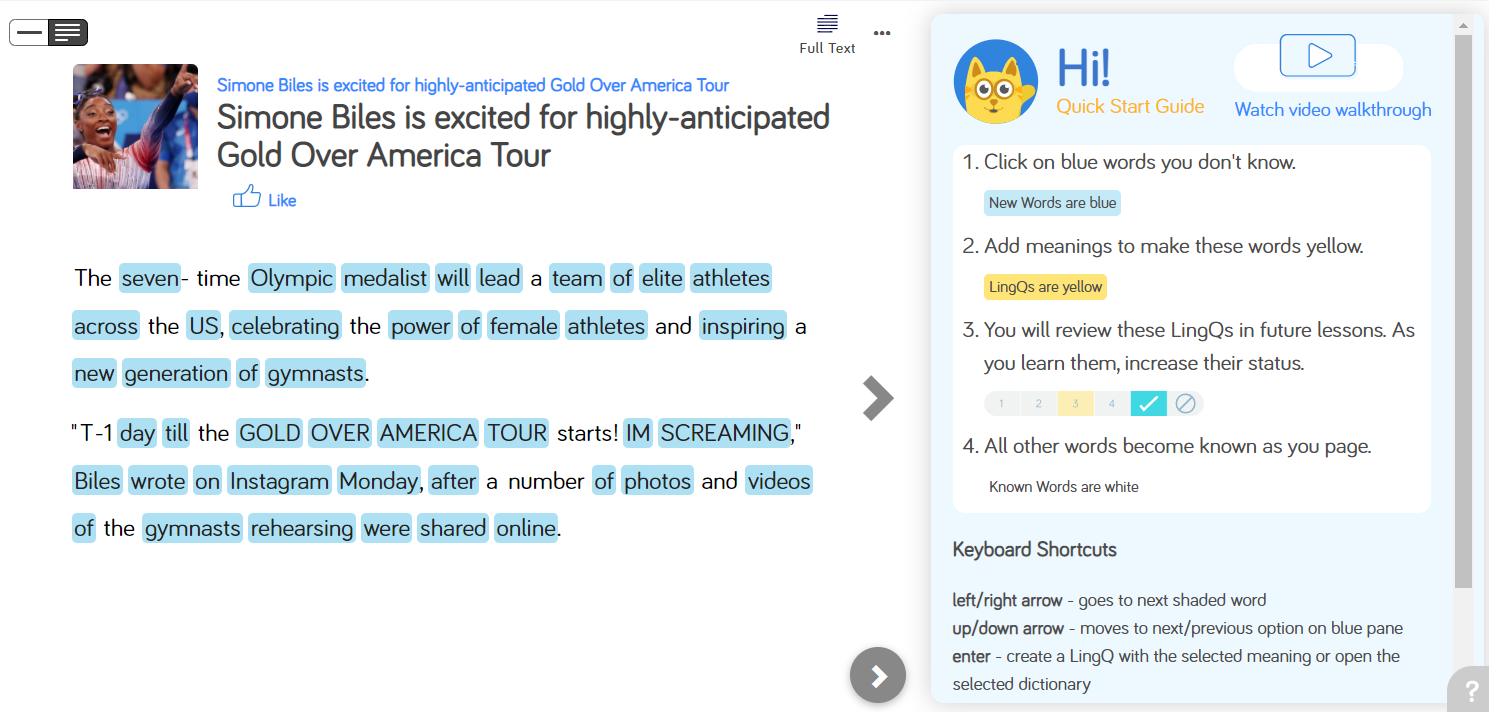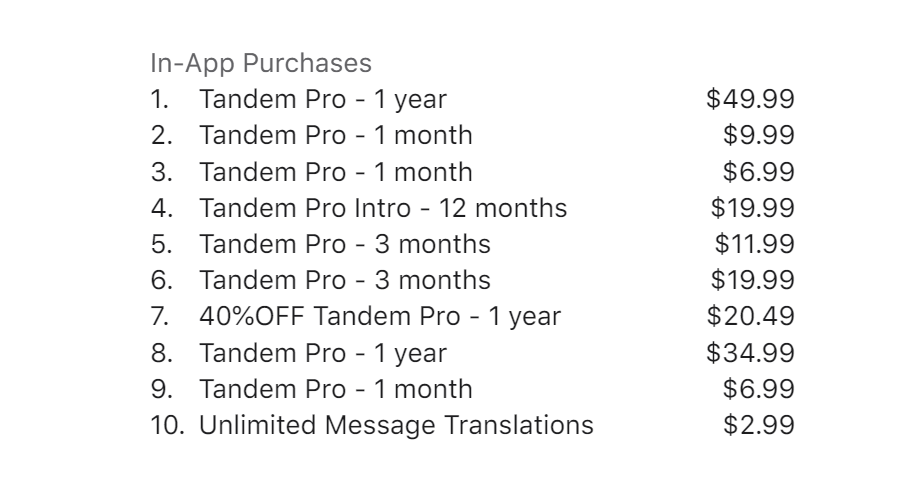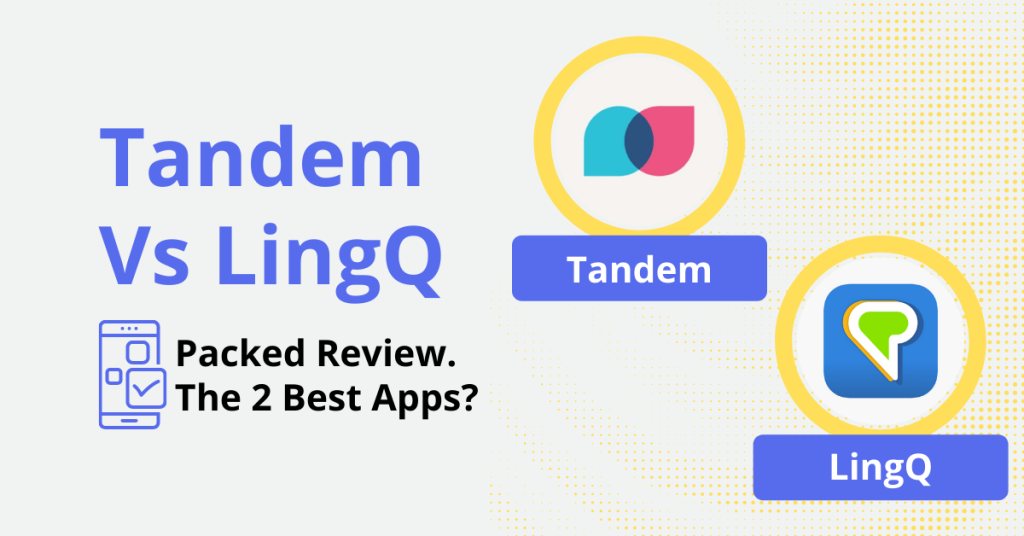Today we’re looking at Tandem vs LingQ, two language apps you can download to hit your language learning targets. This review will be a little different because neither app follows the Duolingo bite-sized lessons approach; instead, they utilize very different methods to get your language proficiency where you want it to be.
This article covers available languages, an overview of both companies, the pros, and cons of both apps, pricing, and an author’s conclusion.
Tandem Vs LingQ: Available Languages
Tandem
There are 300 supported languages on Tandem.
This is just the ‘A’ section, they have plenty more in the app!

LingQ
| Dutch | Esperanto | Belarussian | German |
| Japanese | Portuguese | Greek | Latin |
| Spanish | Arabic | Korean | Russian |
| Polish | Ukrainian | French | Italian |
| Chinese | Swedish |
Available In Beta:
| Turkish | Romanian | Malay | Cantonese |
| Persian | Hungarian | Czech | Finnish |
| Indonesian | Dutch | Gujarati | Serbian |
| Catalan | Norweigan | Hebrew | Slovak |
| Chinese (traditional) | Bulgarian | Croatian |
About Tandem
Tandem= Twitter+ Language Learning App.
It takes the old-fashioned idea of a pen pal and updates it for the 21st century. You create a profile, set your language level, and message a native speaker for a language exchange partner. You can correct someone else’s mistakes and then have your writing corrected, as well as share audio and pictures with your new language buddy, much the way you would on a social media site. Tandem’s biggest selling point is the video call feature, in which you can have a real conversation with a native speaker.
About LingQ
LingQ is a reading platform that also heavily relies on spaced repetition flashcards or LingQ’s. They have articles, stories, and mini-stories in your target language, and you progress through them learning vocabulary in context.
You can also download closed caption content from Youtube and Netflix and watch, listen and read as you go. The playlist function is particularly useful for those who want to listen to podcasts and practice their listening skills.

Tandem’s Pricing Plan
Tandem is free to download, but they have a whole host of add-ons that will improve your experience.

LingQ’s Pricing Plan

Tandem Vs LingQ: Pros And Cons
Tandem
| Pros | Cons |
| Moderation team to stop most time-wasters joining | The inherent dangers of sharing information with strangers online |
| You can learn the culture as well as the language by speaking to natives | students who use it more like a dating app(online harassment) |
| In the app, you can write references for your favorite Tandem members | Dependent on Wifi quality |
| Meet new people from around the world. Networking. | Message overload(particularly for English speakers) |
| Perfect app in a world where lockdowns might become more common | Shortage of native English people |
How To Get Noticed On Tandem
Tandem is useless if you can’t get noticed by speakers of your target foreign language. Remember, the whole point of this app is connecting with others, and people will only connect with you if your profile is attractive.
Here are the four cornerstones of a good Tandem profile:
- Have a photo- People want to see that you’re a real person. They don’t want to see a cat, or a pineapple, or a famous statue in your city. They want to see your face.
- Don’t just say hello- Ask an interesting question. Tandem users, particularly English speakers, get a lot of messages. Set yourself apart from the crowd.
- Don’t flirt!- In my experience, this is the number 1 problem in Tandem. Keep it professional.
- Leave a voice message instead of a text- Reading is harder than listening, and people are more curious to hear what someone’s voice sounds like rather than how they can write.
LingQ
| Pros | Cons |
| The community voted for top translation, as opposed to Google translate | Bugs with some flashcards. The target language is sometimes presented before you have a chance to guess it. |
| Known word counter’ tracks progress | Messy User Interface (even worse on the mobile app) |
| LingQ’s are a great way to create flashcards to new words | More expensive than similar apps |
| You can upload Youtube and Netflix videos and integrate them into lessons | A free version is almost unusable(You get a max of 20 LingQ’s |
| Tutoring service(extra cost) | Apps like DuoLingo and Ling are better for beginners |
| Language exchange in the community tab | |
| Wide choice of languages | |
| There is no ceiling for progress. You can keep uploading more and more advanced material |
Tandem Vs LingQ: Conclusion
Those of you who would prefer a definitive winner will be disappointed. The apps are too different to do a complete side-by-side analysis.
The biggest drawback of Ling is undoubtedly its User Interface. Overall, it looks outdated because of the way the lessons and language courses are arranged. On the other hand, Tandem’s User Interface is excellent, but then that’s because their product is simpler, and they’ve copied the look of a dating app(which might explain why some users become confused by its purpose).
LingQ is for organized and disciplined learners who know how to use language resources. It is not something you could pick up like Duolingo or Ling. Extensive reading is inherently more difficult than bite-sized lessons that focus on different skills.
Whether you like Tandem or not depends on your personality. There is no denying that it is beneficial to talk to native speakers, but some language learners, particularly beginners, are shy. Not to mention that some students do very well in an online setting, and some students prefer real-life interaction.
It is an unfortunate reality of the modern world that online harassers will target young women. Tandem does its best to filter out any bad users, but it can only do so much against persistent offenders. Invariably as a young woman, you are going to get unwanted advances and perhaps even worse. It is to be avoided if these types of things trigger you.
Ultimate Decision:
Use LingQ to practice your reading and vocabulary. Use Tandem to practice speaking and learning about the culture you’re studying.
Language Learning With Ling
Ling is constantly aiming to improve our product, so we are constantly monitoring other language learning apps. If you’re interested in how LingQ and Tandem stack up against some other learning apps, why not check out these reviews. LingQ vs Lingvist and Tandem vs Memrise.
Ling is very different from LingQ and Tandem. It is perfect for those learners who like the DuoLingo method but are trying to learn one of the many languages that DuoLingo doesn’t cater to. So come on over to our website and check out what languages you can start learning today.





































